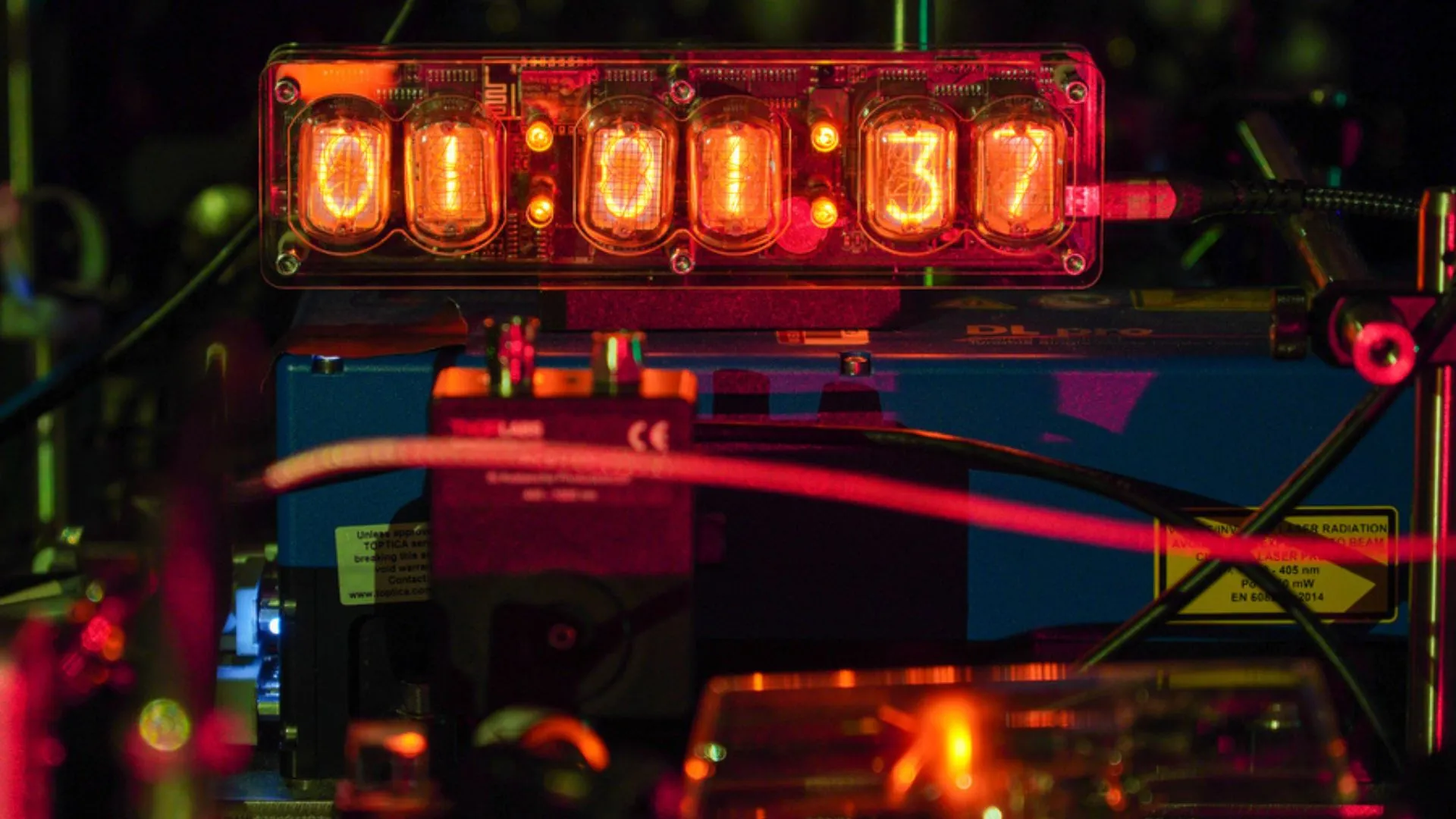
Atomic clocks, which power GPS, online transactions, and data networks, just became more precise. MIT physicists have developed a technique that doubles the accuracy of optical atomic clocks by cutting through quantum noise, a fundamental limit in measuring atomic oscillations.
The breakthrough could help create smaller, portable clocks capable of detecting dark matter, predicting earthquakes, and testing the laws of physics.
Atomic clocks keep time using the steady oscillations of atoms. Traditional models rely on cesium atoms ticking more than 10 billion times per second.
The latest optical atomic clocks use faster atoms such as ytterbium, which tick up to 100 trillion times per second. However, their stability has been restricted by quantum noise, which hides the atoms’ natural rhythm.
The MIT team found that a laser effect once thought irrelevant could actually improve stability. Their method, called global phase spectroscopy, uses a laser-induced “global phase” in ytterbium atoms and strengthens it through quantum amplification.
This approach allows the clock to detect twice as many “ticks” per second compared with the same setup without it.
“We saw that we can now resolve nearly twice as small a difference in the optical frequency or, the clock ticking frequency, without running into the quantum noise limit,” says first author Leon Zaporski.
Building on earlier breakthroughs
The work builds on years of quantum timekeeping research at MIT. In 2020, physicist Vladan Vuletić and his team showed that entangling atoms, which makes them behave in a coordinated way, could improve precision by redistributing noise.
They cooled and trapped hundreds of ytterbium atoms between mirrors, then used a laser to entangle them and sharpen their collective “tick.”
At that stage, the precision was still limited by the instability of the laser. In 2022, the researchers developed a “time reversal” technique, where entangled atoms are briefly de-entangled to amplify the signal difference between laser and atomic tick rates. But that work focused on slower microwave clocks.
“When you have atoms that tick 100 trillion times per second, that’s 10,000 times faster than the frequency of microwaves,” Vuletić says. “We didn’t know at the time how to apply these methods to higher-frequency optical clocks that are much harder to keep stable.”
Toward portable precision
In their new study, the team successfully applied the same time-reversal idea to optical clocks. When a laser interacts with entangled atoms, it leaves behind a subtle trace known as a “global phase” that carries information about the laser’s frequency.
By amplifying this phase signal through entanglement, the researchers could detect and correct laser drift more effectively.
“One might think we’ve done nothing,” Vuletić says. “You get this global phase of the atoms, which is usually considered irrelevant. But this global phase contains information about the laser frequency.”
The technique could make optical clocks smaller, more stable, and usable outside high-end labs. “We think our method can help make these clocks transportable and deployable to where they’re needed,” Vuletić says.
The research, published in Nature, was supported by the U.S. Office of Naval Research, the National Science Foundation, DARPA, and the U.S. Department of Energy.